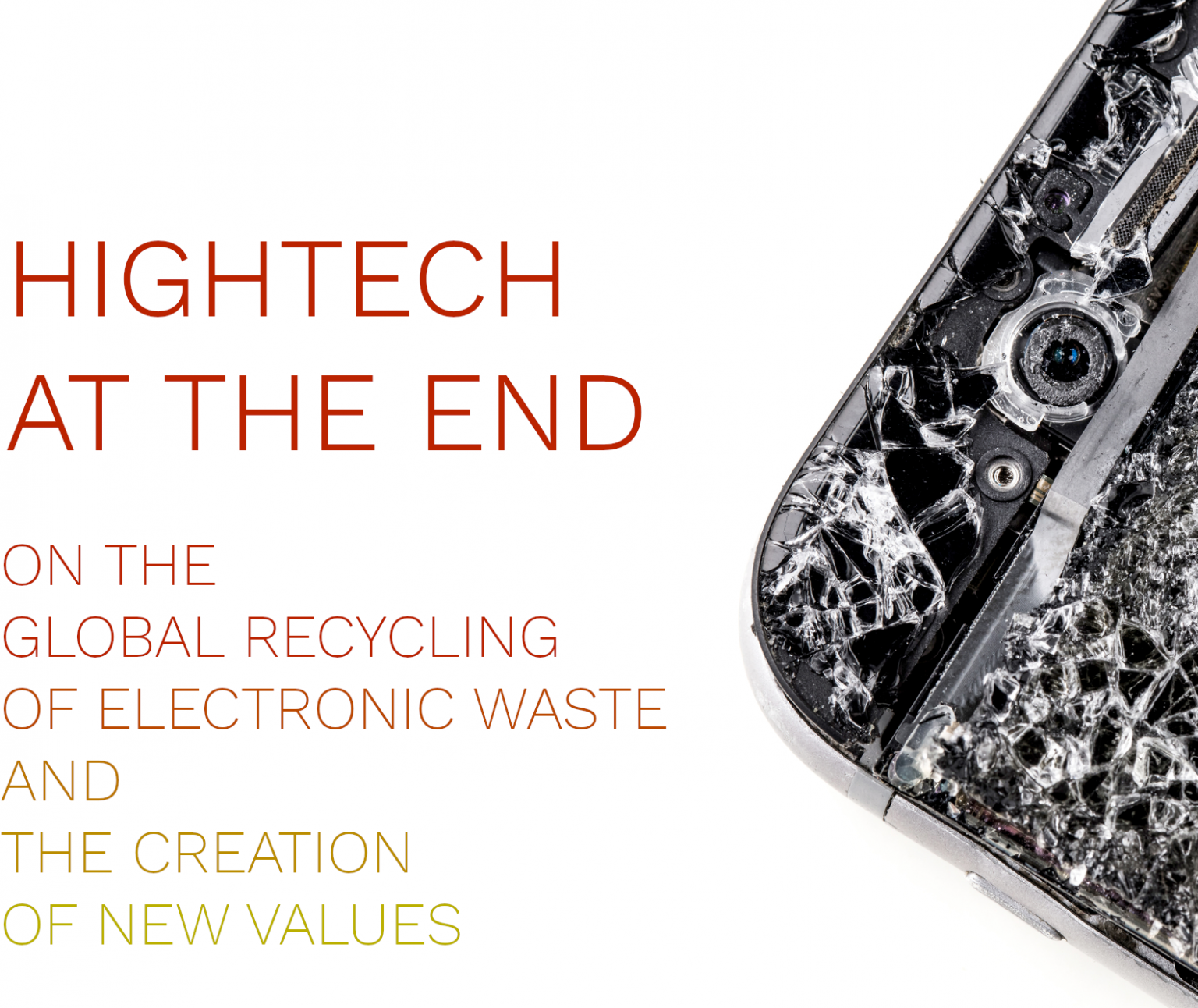E-Waste Research

Global and interdisciplinary research on e-waste: ethnographic studies in Germany, India, and across social media platforms.
Key for this research is a book I published: Hightech at the end.
Hightech at the end examines the global recycling of electronic waste by studying multiple sites: ethnographic observations help unravel political negotiations on sustainability in India, the in-house value chain of a German recycling company is scrutinized, and a failed Google innovation is discussed.
The Intro: Moving away from individual consumption
Electronic waste is a unique and fascinating waste stream. It keeps popping up on the news. The mountain of waste is growing – more than 50 million tons per year, as the United Nations University estimates in its renowned “E-Waste” reports. And at the same time, consumers learn from the many reports about the strange routes that ‘their’ e-waste takes after disposal. These are usually stories in which things like old computers travel to the global south, to West Africa or Asia.
What is being conveyed is a general uncertainty. Too little is happening. Garbage is not only not avoided, but it also makes conditions and life even worse. Individual consumption makes life in the distance worse. But this argument is misleading. Critical researcher points out that such reports reproduce racism and increase inequalities.
High-tech at the end presents an alternative perspective. There is by no means little being done in dealing with electronic waste. The legal and industrial changes are just difficult to grasp. They take place on an infrastructural level that requires special attention. At the same time, the book’s core argument is that this is why the focus on individual responsibility – on households, for example – falls far short. It is industrial practices that are responsible for most waste and the most toxic waste; consumers cannot control this and do not even know about many industrial routines. “Infrastructures,” the book argues, “related production systems and their path dependencies are mainly responsible for material output, i.e. energy consumption, residues and waste. The ratios are difficult to estimate, but only between 3 and 9 per cent of e-waste is household waste, and even this waste is highly mediated. The exact calculation of this is not of central importance here, this is a controversy in itself, as the academic blog “Discard Studies” shows in detail.
High-tech in the end develops the argument that an infrastructure of high-tech recycling has been established over the last three decades. You have to look at this infrastructure if you want to understand how waste is handled. By examining the everyday work on and with the high-tech infrastructure, taking into account its history, one gains a new view of social structures and dynamics.
Towards a new e-waste policy
High-tech at the end discusses a variety of approaches to address the issues, including a critical look at the current European recycling industry. It should be viewed critically because it discusses waste in a rather one-sided way, usually in a negative way, i.e. as a hazard. Repair in particular offers potential here, while it is not held in very high esteem, especially when compared with the significant funding initiatives that shredder and smelting companies receive.
In the fourth part of the book, political questions are played through, and the focus is on political consequences and new democratic impulses. It is a plea for a new examination of very selected questions:
How can the recycling industry really put industrial responsibility at the centre? There is a great deal of creativity and political urge in dealing with household waste. How can the reach be increased to tackle waste prevention aggressively? How can knowledge about the quantities and distribution of different types of electronic waste be improved? (Because estimates such as the ratio of household and industrial waste are currently only rough estimates, which emphasizes the problem). How can the reparability of electronic equipment be promoted? For example, how far does the announced EU law on the “right to repair” go? How can the causes of obsolescence be better researched, beyond stereotypes? How can local initiatives be fostered to empower users? How can global solidarity be built, and how can initiatives learn from each other? How can a project like the Fairphone become more than a “proof of concept”? How does the political responsibility of the big producers come into focus? What kind of waste should be produced? Which dirty materials are acceptable, how many, where? How can such questions be approached democratically? Do proactive regulations of other industries offer good examples?
More on this dissertation
You can read more about this dissertation on the website of the book. I’ve published various articles on the topic:
- Laser, Stefan/Alison Stowell (2020): Apple’s recycling robot „Liam“ and the global recycling economy of e-waste. What ‘The Guardian’ does, and what he misses out on. In: Johansson, Nils/Ek, Richard (Eds.), Perspectives on waste from the social sciences and humanities: Opening the bin. Cambridge: Cambride Scholars, 265–279.
- Greeson, Emma, Stefan Laser, und Olli Pyyhtinen. 2020. “Dis/Assembling Value: Lessons from Waste Valuation Practices”. Valuation Studies 7 (2): 151–66.
- Laser, Stefan. 2020. “Sorting, Shredding and Smelting Scrap: The Production of Value by Deformation at a High-Tech Recycler of Electronic Waste” 7 (2).
- Laser, Stefan. 2016. “A Phone Worth Keeping for the Next 6 Billion? Exploring the Creation of a Modular Smartphone Made by Google”. In Müll: Interdisziplinäre Perspektiven auf das Übrig-Gebliebene, edited by Christiane Lewe, Tim Othold, und Nicolas Oxen, 201–26. Bielefeld: transcript.